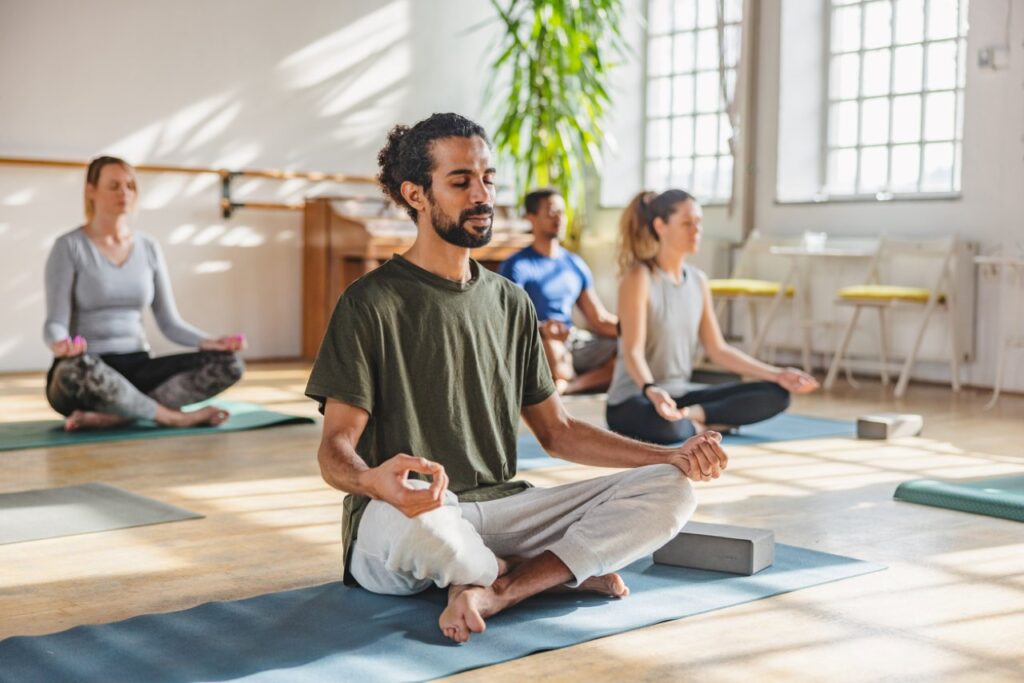Friday, April 19th, 2024
When it comes to selecting the right fitness regimen, you might find yourself caught between the choices of Pilates and Yoga. Both practices are popular for improving flexibility, strength, and mental wellness, but they cater to different preferences and goals. So, what’s best for you? This article will guide you through the key differences between Pilates and Yoga, helping you decide which might be the best fit for your fitness journey. Let’s dive in!
What is Pilates?
Developed in the early 20th century by Joseph Pilates, Pilates is a physical fitness system that focuses on posture, balance, and flexibility. At its core, Pilates involves precise movements aimed at targeting specific muscle groups, known as the “Powerhouse,” which includes the abdominals, lower back, hips, and buttocks. These exercises are typically performed on a mat or specialized equipment like a Reformer, which adds resistance to the workouts.
What is Yoga?
Yoga, on the other hand, is an ancient practice with its roots in India, designed to unite the body, mind, and spirit. This holistic approach includes a series of poses (asanas), breathing techniques (pranayama), and meditation (dhyana). Yoga classes can vary widely, from gentle to intense, with styles like Hatha yoga focusing on slow and controlled movements, while Ashtanga yoga involves a more vigorous sequence of poses.
Goals and Focus
If you’re trying to choose between Pilates and yoga, consider what your primary goals are. Pilates is especially beneficial for those looking to improve core strength and stability, rehabilitate injuries, and enhance overall physical alignment. Yoga, in contrast, aims to provide a deeper spiritual experience along with its physical benefits, promoting stress relief, flexibility, and inner peace.
Techniques and Exercises
The techniques and exercises used in Pilates and Yoga also differ significantly. Pilates exercises are often dynamic, with a focus on muscle toning and control without unnecessary stress on the heart or joints. Yoga incorporates static stretches that aim to improve flexibility and mental concentration. In Yoga, each pose is typically held for a period, integrating breath work to deepen relaxation or energize the body depending on the practice.
Benefits of Pilates
Pilates offers numerous health benefits including enhanced flexibility, increased muscle strength and tone, particularly of your abdominal muscles, lower back, hips, and buttocks (the ‘core muscles’ of your body). It also improves muscular control of your back and limbs, and enhances stabilization of your spine, which can result in improved coordination and balance.
Benefits of Yoga

Yoga’s benefits are broad and include increasing flexibility and balance, improving cardiovascular and digestive health, and fostering a greater sense of mental calm and focus. Regular yoga practice is known to decrease stress and anxiety through its meditative practices, enhancing overall emotional resilience.
Equipment and Props
Pilates and Yoga both use various equipment and props to enhance their exercises, but the types they use differ considerably; pilates often requires specific machinery, such as a Reformer, which uses springs for resistance, or smaller props like stability balls, rings, and resistance bands to help intensify the exercises and target specific muscle groups more effectively. On the other hand, Yoga primarily makes use of mats, blocks, straps, and bolsters. These aids help to modify poses, support the body, and deepen stretches, making the practice accessible to beginners and experts alike.
Accessibility and Modifications
Both Pilates and Yoga are adaptable to different fitness levels and abilities, offering a range of modifications to cater to individual needs. Pilates exercises can be adjusted by altering the resistance on machines or using different props to increase or decrease the difficulty level. Similarly, Yoga poses can be modified with props like blocks or straps, or adjusted to simpler versions that maintain the integrity of the pose without strain, making both practices suitable for everyone from complete beginners to seasoned athletes, and even those recovering from injuries.
Pilates vs. Yoga: Which One is Right for You?
Determining whether Pilates or Yoga is better suited to you depends largely on your personal health goals and preferences.If strengthening your core and improving physical alignment are your priorities, you might want to discover Pilates. However, if you’re seeking a more integrative approach to enhance both your physical and mental health, Yoga might be the perfect fit.
Similarly, if you’re more drawn to improving flexibility, mental relaxation, and holistic health, Yoga might be more beneficial. Consider also your lifestyle and what type of class atmosphere you prefer – Pilates is generally more structured and workout-centric, while Yoga often explores a spiritual and relaxing environment.
The Bottom Line
Ultimately, both Pilates and Yoga offer unique benefits and can be a rewarding part of your fitness regime, and the best way to decide which is right for you is to try both and observe how your body and mind respond to each practice. If you’re curious about Pilates and looking to explore it further, consider visiting us at FitFlexFly, the best Pilates studio in Indianapolis! Whatever path you choose, embracing either Pilates or Yoga can lead to greater health, well-being, and peace of mind – and we’d love to be on that journey with you.

